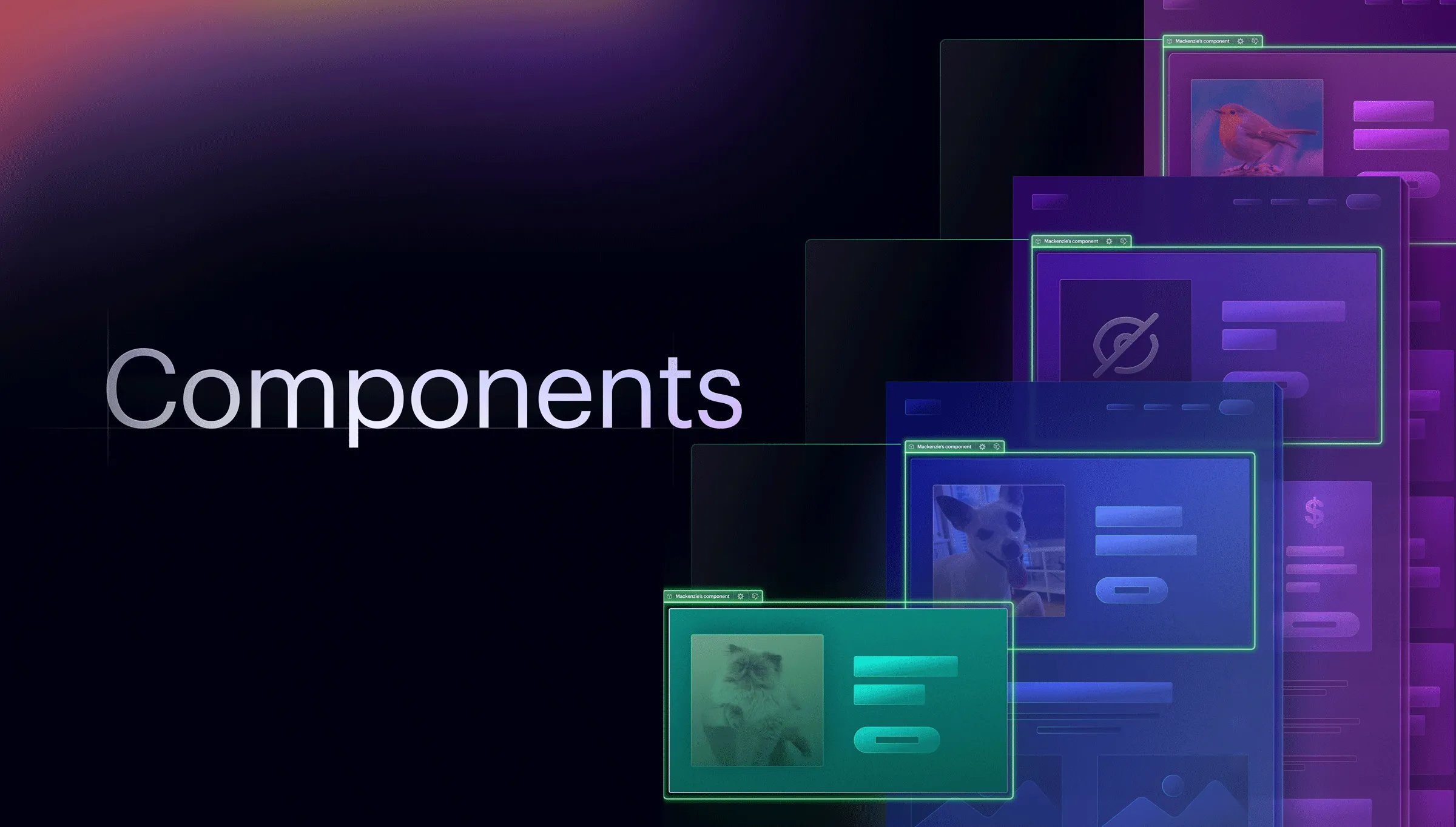Scalable Web Design Using Webflow Components
Show Notes
Transcript
How we helped a client scale smarter with Webflow
A few weeks ago, we had a call with one of our clients about scaling their website efficiently. Their business was growing, and so was their website—but with growth came challenges.
They were running into inconsistent designs, clunky updates, and long development cycles every time they needed to add a new page or tweak existing features.
Sound familiar?
That’s when we introduced them to the idea of design systems and components in Webflow—two powerful tools that not only solve these problems but set businesses up for long-term scalability.
By the end of the call, the client could already see how this approach would save time, reduce costs, and make their website future-proof.
Let’s dive into what we discussed and why these strategies are absolute game-changers for modern businesses.
The problem: when growth slows you down
When businesses grow, their websites grow with them—but growth often comes with growing pains:
• Inconsistency – Pages look and feel different because there’s no unified design approach.
• Manual Updates – A small text or design change means editing each page individually, eating up hours of time.
• Resource Drain – Developers spend more time fixing small issues than focusing on larger innovations.
For our client, this wasn’t just frustrating—it was unsustainable. With their plans for expansion, they needed a website that could keep up.
That’s when we introduced the concept of a design system paired with Webflow’s reusable components.
What is a design system?
A design system creates a blueprint for consistency. It defines:
• Colors and Fonts – Your branding at a glance.
• Buttons and Forms – Standardized styles for user interaction.
• Headers and Footers – Reusable layouts that keep things organized.
• Spacing and Grids – A foundation for structure and flow.
With a design system, every page speaks the same visual language, ensuring branding consistency and scalable growth.
What are Webflow components?
This is where things get really exciting.
While a design system gives you the rules, Webflow components give you the tools to put those rules into action.
In Webflow, components are pre-built, reusable blocks that can be used across your site.
Think of them like LEGO bricks—once you build a component (like a testimonial slider, pricing table, or call-to-action section), you can:
• Reuse it anywhere on your site.
• Edit it once and watch the changes update everywhere it’s used.
• Customize variations while keeping the underlying structure intact.
Why it matters for your team
Implementing design systems and components isn’t just a “nice-to-have”—it’s a strategic move that sets your team up for long-term success. For our client, it meant less time spent wrestling with design inconsistencies and more time focused on scaling their impact.
Instead of rebuilding the wheel with every new page, they now have a library of consistent, on-brand components they can pull from anytime. Their development time has been cut in half, and their site finally reflects the level of professionalism their business deserves.
The Bottom Line
If your website feels like it’s holding you back, it might be time to rethink how it’s built. Design systems and Webflow components bring structure, speed, and flexibility to the development process—making it easier to grow without the growing pains.
Want to see how this could work for your site? We’d love to chat. Reach out and let’s explore how to future-proof your online presence.
Scalable Web Design Using Webflow Components
As businesses grow, their websites often become harder to manage—slowing down updates, creating inconsistencies, and draining resources. In this post, we break down how implementing a design system and using Webflow components can solve those challenges. These tools streamline updates, maintain brand consistency, and make scaling faster and more efficient. Learn how one of our clients used this strategy to future-proof their site and save valuable time and money.

Show Notes
Transcript
How we helped a client scale smarter with Webflow
A few weeks ago, we had a call with one of our clients about scaling their website efficiently. Their business was growing, and so was their website—but with growth came challenges.
They were running into inconsistent designs, clunky updates, and long development cycles every time they needed to add a new page or tweak existing features.
Sound familiar?
That’s when we introduced them to the idea of design systems and components in Webflow—two powerful tools that not only solve these problems but set businesses up for long-term scalability.
By the end of the call, the client could already see how this approach would save time, reduce costs, and make their website future-proof.
Let’s dive into what we discussed and why these strategies are absolute game-changers for modern businesses.
The problem: when growth slows you down
When businesses grow, their websites grow with them—but growth often comes with growing pains:
• Inconsistency – Pages look and feel different because there’s no unified design approach.
• Manual Updates – A small text or design change means editing each page individually, eating up hours of time.
• Resource Drain – Developers spend more time fixing small issues than focusing on larger innovations.
For our client, this wasn’t just frustrating—it was unsustainable. With their plans for expansion, they needed a website that could keep up.
That’s when we introduced the concept of a design system paired with Webflow’s reusable components.
What is a design system?
A design system creates a blueprint for consistency. It defines:
• Colors and Fonts – Your branding at a glance.
• Buttons and Forms – Standardized styles for user interaction.
• Headers and Footers – Reusable layouts that keep things organized.
• Spacing and Grids – A foundation for structure and flow.
With a design system, every page speaks the same visual language, ensuring branding consistency and scalable growth.
What are Webflow components?
This is where things get really exciting.
While a design system gives you the rules, Webflow components give you the tools to put those rules into action.
In Webflow, components are pre-built, reusable blocks that can be used across your site.
Think of them like LEGO bricks—once you build a component (like a testimonial slider, pricing table, or call-to-action section), you can:
• Reuse it anywhere on your site.
• Edit it once and watch the changes update everywhere it’s used.
• Customize variations while keeping the underlying structure intact.
Why it matters for your team
Implementing design systems and components isn’t just a “nice-to-have”—it’s a strategic move that sets your team up for long-term success. For our client, it meant less time spent wrestling with design inconsistencies and more time focused on scaling their impact.
Instead of rebuilding the wheel with every new page, they now have a library of consistent, on-brand components they can pull from anytime. Their development time has been cut in half, and their site finally reflects the level of professionalism their business deserves.
The Bottom Line
If your website feels like it’s holding you back, it might be time to rethink how it’s built. Design systems and Webflow components bring structure, speed, and flexibility to the development process—making it easier to grow without the growing pains.
Want to see how this could work for your site? We’d love to chat. Reach out and let’s explore how to future-proof your online presence.





